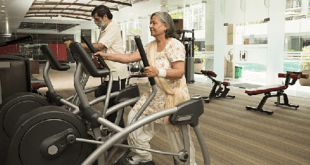Restless Legs Syndrome is a common neurological disorder affecting more than 10 million cases per year in India
People of all age groups develop symptoms of Restless Legs Syndrome (RLS). RLS is a neurological condition that causes an irresistible urge to move the legs. It is a chronic condition that can last for years or be lifelong. The symptoms may begin in childhood or adulthood, however, older adults tend to suffer severely. It is one of the most common disorders affecting more than 10 million cases per year in India. According to research, the prevalence of RLS in a South Indian urban population is 2.1%.
How does it interfere with the quality of life (sleep and fatigue)?
People usually experience pulling, tingling, and pain feelings while sitting or lying down which get worse at night. Sometimes, the symptoms become unbearable and in severe cases, it can affect the arms or other parts of the body in addition to the legs. The unpleasant feelings and the resulting need to move the legs often make it difficult for a person with RLS to fall asleep or stay asleep. Over time, it can affect the quality and amount of sleep which can lead to the development of mood swings, depression, or other health problems hindering the quality of life as well.”
RLS is a partially heritable disorder more prevalent in women than in men. The presence of low iron content despite normal hemoglobin, having high estrogen levels in women can influence dopamine and glutamate transmission, making them more vulnerable to this condition. Women are also more prone to migraine, depression, and anxiety. These conditions can contribute to the development of RLS in women.
Pregnant women more likely to get RLS
Pregnant women are at the risk. This may be contributed to the low serum iron and ferritin level, and high estrogen level during pregnancy. Studies have found that the prevalence of RLS among pregnant women ranged from 10 to 34%. It is RLS usually associated with a number of pregnancy complications such as preeclampsia and increased incidence of Cesarean sections. RLS is also more commonly in people with chronic kidney disease (CKD), especially those on haemodialysis. Anaemia, iron deficiency or high calcium levels in the blood are some of the factors that can cause RLS or worsen the symptoms.”
Treatment:
RLS is a lifelong condition. The condition can be managed effectively with proper treatment. Self-care steps, lifestyle changes or medication may help. Movement, such as kicking, stretching, rubbing, or pacing, make the discomfort go away, at least temporarily. In severe conditions, medicines are prescribed. Basis your condition and severity, the doctor will be able to diagnose and provide a proper treatment plan. A simple change in your lifestyle works for those with mild symptoms. Getting moderate, regular exercise may relieve symptoms of RLS. One can also use soak the legs in warm water and give massages. Establish good sleep hygiene; have a regular sleep time and sleep in a cool, quiet, comfortable sleeping environment and avoid caffeine.
Authored by Dr. Anuradha H K, Consultant – Neurology at Aster CMI Hospital, Bangalore
 Newspatrolling.com News cum Content Syndication Portal Online
Newspatrolling.com News cum Content Syndication Portal Online






